Buddy Is Love, Buddy Is Life: An Interview With ‘Arizona Sunshine 2’ Technical Director Trevor Blom
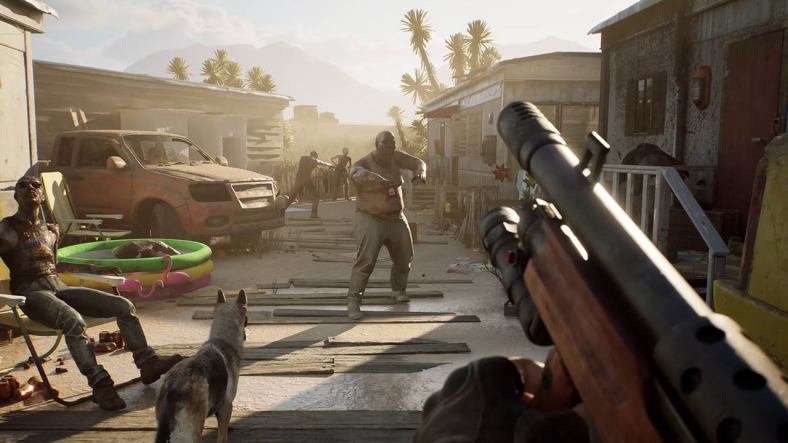
With the release of Arizona Sunshine 2, I had a chance to sit down with Trevor Blom, Technical Director, and chat about the evolution of the zombie franchise between releases and how it came to be.
Dread Central: When did the ideas for Arizona Sunshine 2 start kicking around?
Trevor Blom: When did we decide to do Arizona Sunshine 2? Ideas of what we could do already started in Arizona 1 because stuff doesn’t make it through the game. It’s out of scope, or you get new ideas along the way. Or shortly after diving right into the game’s second version after launching the first, another great idea [will come up], especially since we were still a small team back then. So we had to try something else and then see how it goes with Arizona.
Then we did some DLCs and smaller updates while working on After The Fall and other projects. During After The Fall, the decision was made for the next big project, Arizona Sunshine 2, and we also started fleshing it out. What do we want to put into this game? What does version two mean and what does it mean in VR? Because there were few number twos in VR yet. The leap in hardware has been insane in the last few years, so obviously ready to do something like that. We wanted to push quality and not necessarily scope or more content, just better looking and more on par with the current hardware.
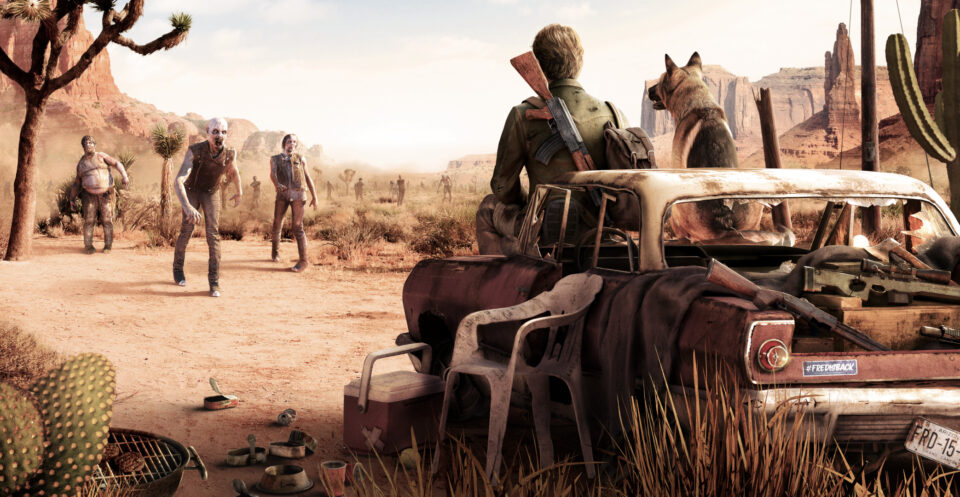
DC: What are some of the more extensive lessons you learned from Arizona Sunshine 1 that you brought to Arizona Sunshine 2?
TB: Oh, we learned a lot along the way. We first only launched as a PC title. More technically, we used deferred shading, which is a rendering technique. There are two main render techniques: forward rendering, which is the basic standard one, and deferred, where you defer some rendering passes and then combine them at the end. This was very popular back then and still is for a lot of larger PC games not in VR. So, we only did the PC versions first. And then, we did the PlayStation ports and the Quest ports afterward.
Having to remake the game again for another platform was more of a budget thing back then, PSVR didn’t exist then whatever, plenty of reasons. But they’ve really started to learn a good way to produce a game cross-platform, especially in VR. It’s a multiplayer game. So you want enough players in multiplayer. A way to do this today in VR, which has a smaller player base, is to combine all these platforms so those players can all play together.
We learned we need a different way of making games to ensure that we only have to make the game once with some side steps for these other platforms. And not having to redo the same level three times and keep the efficiency of making a game. So that’s something that we realized early on in Arizona Sunshine 1. VR itself is very unique in how players react to it and how they interact with it.
For example, there are many options you can choose in the game now and how you want to play your game. When VR was still very new, teleport was the primary way to do movement. Actually, the launch version of the game didn’t even have sliding locomotion yet. That was a request that came from a community after the launch. If you just slide, you get sick, right? It doesn’t work in VR; it’s really niche.
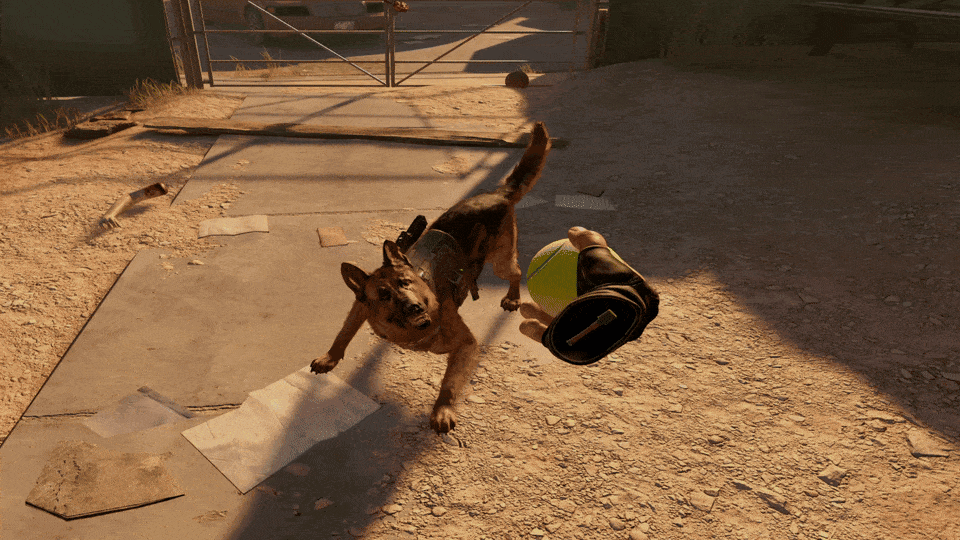
But then, after launch, we started hearing more like, hey, we want to try sliding. So we got sliding in and a lot of us began to like it.
Nowadays, almost everyone in the office space plays with sliding. So it’s tipped the other way around, where we still have teleport, especially for new VR players and people who are more susceptible to the nausea. But it’s one of those features that is the sole difference per player.
So [Arizona Sunshine 2 is] a zombie shooter, it’s rated mature, we can go all the way. There are no limits. How far do we actually want to go? What do we want to push? Do we even get to the point where we scare off players? And then, with our analytics, a lot of people quit playing around the time that they entered the mines. It’s a scarier portion of the game. We’ve already decided we’re not going full-on. We don’t like jumpscares in VR, so we’re steering away from that, but we really like the tension. Being scared of being in a zombie apocalypse is already good enough. Play with audio, play with vistas, and how you can see the zombies, but never zombies show up right in your face. We try to avoid that.
DC: Was there ever a point where, I’m just going to say, a flat version of Arizona Sunshine 2 was ever being considered just for non-VR players?
TB: Yeah, we’ve been fantasizing about this a lot. Also, plenty of us have been in VR for over five years. Honestly, one of the most annoying things in VR development is constantly having to put on the headset. Then we started talking about what Arizona Sunshine 2 means outside of VR. Is that a possibility? So, it’s always on the table for us to explore more of the non-VR side of things. But we’re in a really good position in this niche. We have expertise here. That’s what we do. It’s in our DNA. But I know we are not closing this door, not for us, not for our partners. Maybe I want to take all their options, but there’s nothing concrete at the moment.
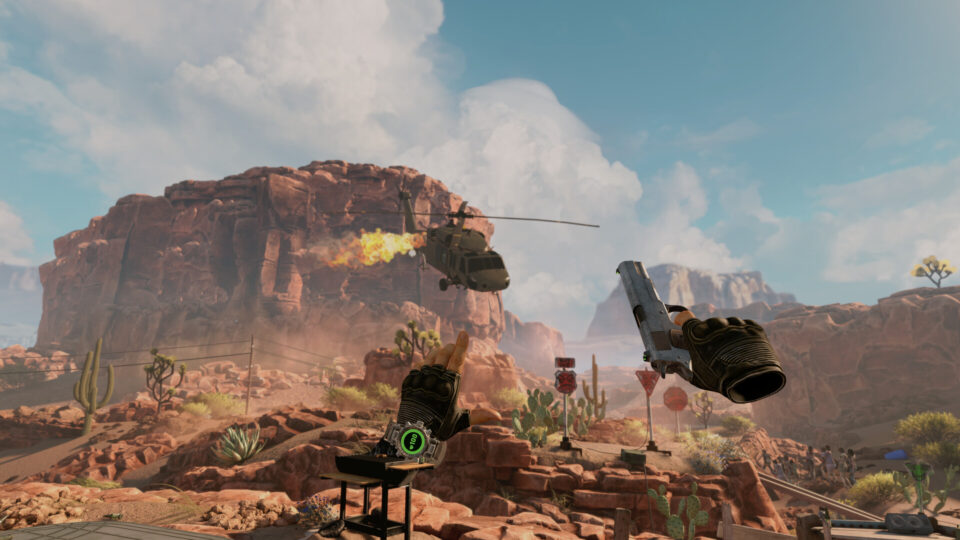
DC: The main draw of Arizona Sunshine 2 is Buddy. How did that idea come around?
TB: The initial idea came from our creative director, who is actually a cat person. He pitched the idea of a dog, which you could then kill. Then, some pushback came from the team. Like, “What do we actually want to do with this dog?” And we started talking about the story. We began to work on the world and which story we wanted to tell with this version. And what is the place for Buddy in there? We wanted something to stick through in Arizona Sunshine 2.
You have this carrot of humanity, which you’re chasing, but you never really reach it. Now, he’s been alone for a long time. He’s depressed, and he’s pretty much done with it. So we want to give something else again, which is not a human to interact with. But we wanted to sort of open it up and make it more and more happy in that sense. So, a pet totally makes sense there. Then, what’s an animal that’s relatable and that you can do stuff with? So a dog makes more sense. I was on my holiday when he pitched this idea. And I said I’m coming back, I’m making this my feature.
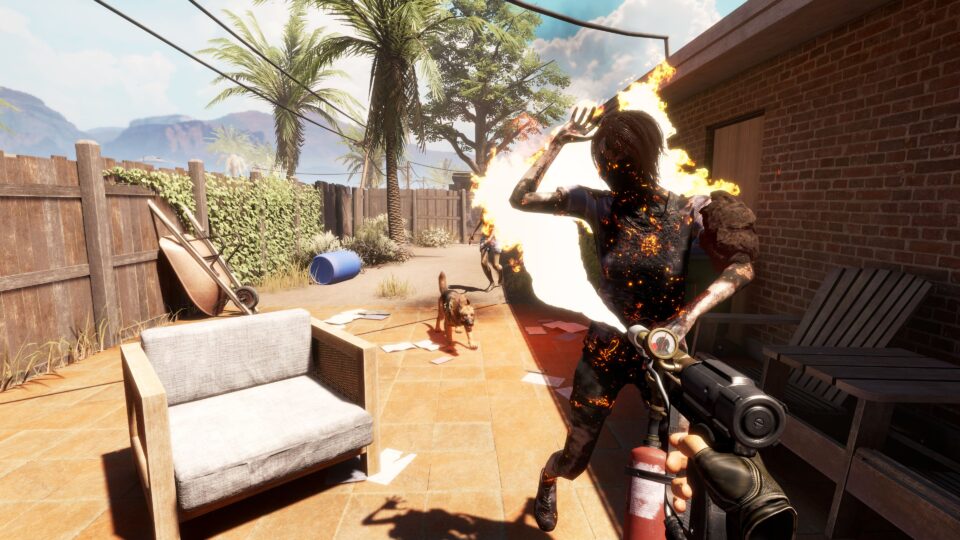
DC: There’s also an evolution of weapons and ways to dispatch the Fred’s. How does the team design new weapons and decide what stays and what goes?
TB: We learned a lot with After The Fall because we went very deep on the gun interaction, and our gun handling also looked at other games in VR, what the standard is, and what people expect nowadays. So we took that as a base, and I started working out from that. We discarded some weapons. After The Fall, it was like a fantasy world. It’s like these makeshift weapons, still inspired by real guns. Arizona Sunshine has real guns, just something you could find in the real world. So we took that as a basis. We took those guns, and we discarded some that were too crazy.
So we kept the ones that we thought could fit, and we patched them up so that they would make more sense in this universe. We ensured we had enough of the types of guns we wanted for all the ammo types you have and the interactions you have in the game. There’s a team of dedicated designer artists and programmers working on gun interactions. We didn’t do melee before because we never really did it right.
There have been a lot of questions about it to get melee in. We really wanted to do it for this game. But solving that puzzle was still pretty complex. We settled for only doing sharp weapons with a pointy edge. Because then you can really have an impact where your weapon gets stuck in the zombie. And it doesn’t become this floaty thing where, like, if you had a baseball bat, you hit the zombie. And maybe you have some haptics, which the controller goes through, and it’s still floating around.
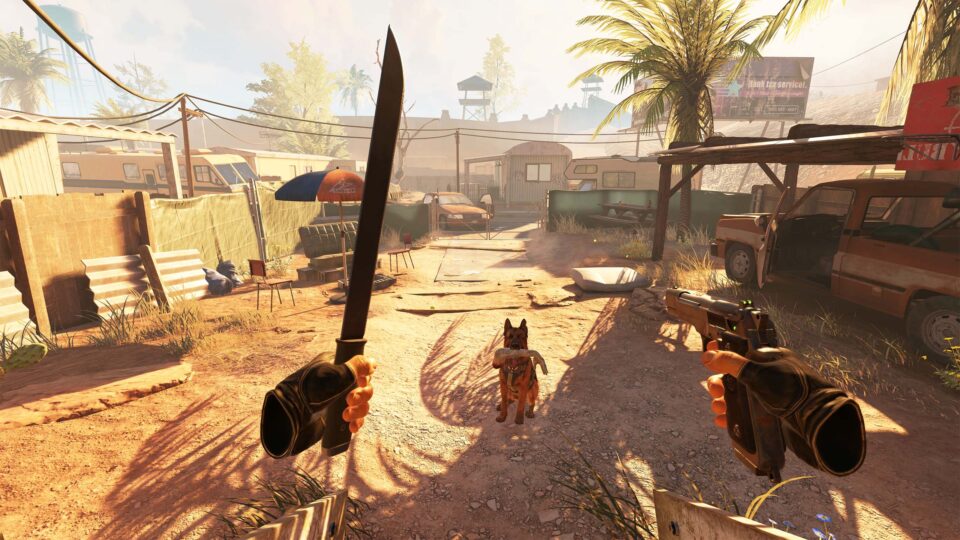
DC: Without spoiling anything, the way Arizona Sunshine 2 ends is that it’s clear that the story can continue. So, I wondered if the team had plans for some story-based DLC on what happens to some characters.
TB: More will come about that next year.
DC: Was there ever a time when the idea floated around that the second player would embody Buddy?
TB: Yes. We did talk about it. But it’s more like a fun idea. You have to solve the whole problem of being a dog in VR. And how does the movement work? What can you do? Like, I think we stopped that really quickly. But it did come up.
DC : Does the character have a name internally?
Trevor Blom: If we give him a name, it would be a different name.
DC: Arizona Sunshine 2 is out now. And the reception has been fantastic. How was the team taking that? How has the team celebrated? Are they excited? Are they eager to work on whatever comes next?
TB: It’s always amazing to get the game into the hands of the players, especially in the last few months going up to launch. It’s not really depressing. But it’s not always the most motivated period to work. Because you’re always working on bugs, you’re working on issues. Everything that works, that’s fine. You leave that be, and you focus only on the things that don’t work. So, everyone is just looking at bugs and the broken things in the game. So it’s tough to have an idea of how good it is. Then, you actually get those reviews in and see people play.
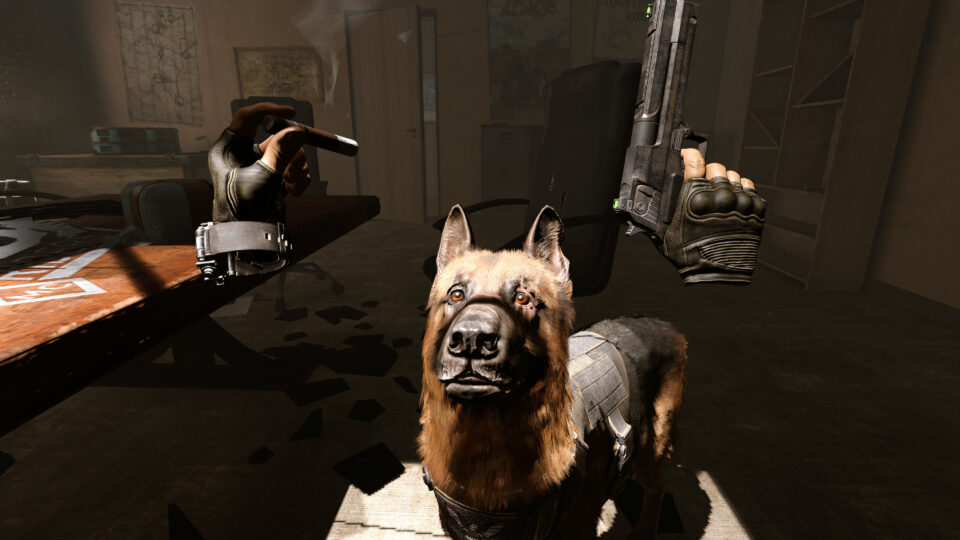
The embargo would go off at five, and the game would go live at seven.
So we ordered Chinese and sat in a meeting room with 30 people. At five, waiting for the embargo, we would refresh to see the first reviews go in. We had eights and nines, and everyone was ecstatic and super happy. Afterward, people would start playing on Twitch so we could live stream, like a co-op session. It was just amazing. We were laughing constantly. It was so cool to see, and that motivates everything and everyone. That’s what you do it for. That’s why you make games.
In the end, that’s why we all entered this industry and are doing this. We just want to make awesome stuff and have other people play. We had the launch party in Rotterdam at an old pool that they closed 15 years ago, but they haven’t done anything to serve it in 15 years. So it’s this Apocalypse you walk into. And we just had a party there, zombie actors having drinks and a laugh. That was when many people also went on holiday—a well-deserved holiday. So that’s how we celebrated it. And I think everyone is hyped to work on the next project.
It was great to sit down and pick Trevor’s brain about VR and Arizona Sunshine 2. Be sure to check out our list of best Multiplayer Horror games while you’re at it!
Categorized:Horror Gaming Interviews

